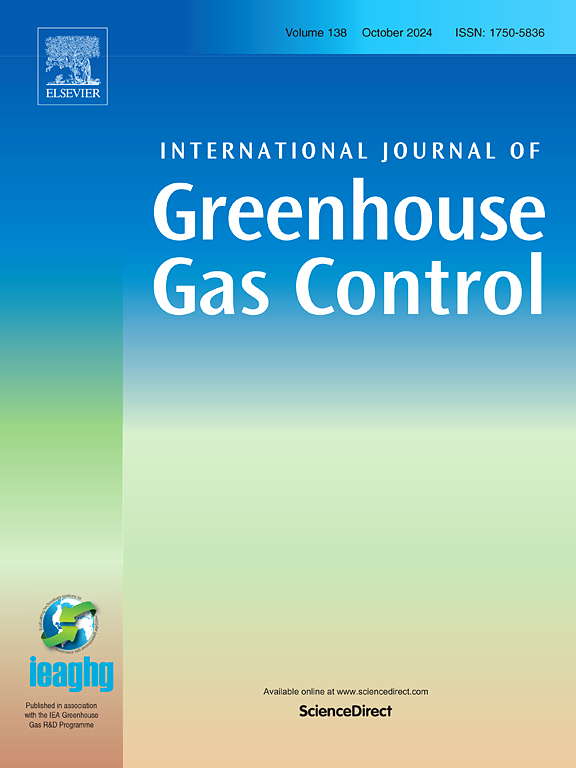Optimising soil gas monitoring at an on-shore geological carbon sequestration site
IF 5.2
3区 工程技术
Q2 ENERGY & FUELS
International Journal of Greenhouse Gas Control
Pub Date : 2025-07-18
DOI:10.1016/j.ijggc.2025.104437
引用次数: 0
Abstract
Soil gas sampling provides valuable insights for environmental assurance monitoring at carbon capture and storage (CCS) sites. Being a point-source sampling technique, soil gas samples are subject to natural temporal and spatial variabilities. CCS-related soil gas monitoring strategies have evolved over the past decades from intensive sampling to a risk-based approach targeting specific areas. This paper outlines the evolution of monitoring and explores options to optimise monitoring strategies at different spatial resolutions. Sampling approaches were trialled using one year of data collected from an Australian CCS demonstration site, the Otway International Test Centre (OITC), where soil gas was monitored at 124 grid-based locations (100–200 m apart) to achieve multiple monitoring objectives. Results of soil gas CO2 concentration from the 2022 annual sampling campaign ranged over tenfold (0.04 % to 8.07 %), providing a reasonable characterisation of the natural variability of soil gas composition. This systematic approach was compared with random selections of sampling locations at reduced sampling densities, grid-based sampling at reduced sampling densities, and risk-based monitoring. The combined approach with systematic monitoring and a risk-based approach, depending on the stages of the project, are recommended. Strategy-specific baselines extracted from a comprehensive baseline are recommended to take into consideration spatial variability based on the design and potential changes in long-term monitoring.
优化陆上地质碳封存地点的土壤气体监测
土壤气体采样为碳捕获和储存(CCS)站点的环境保证监测提供了有价值的见解。土壤气体样品是一种点源采样技术,具有自然的时空变异性。在过去的几十年里,与ccs相关的土壤气体监测策略已经从密集采样发展到针对特定区域的基于风险的方法。本文概述了监测的演变,并探讨了在不同空间分辨率下优化监测策略的选择。取样方法使用从澳大利亚CCS示范点Otway国际测试中心(OITC)收集的一年数据进行了试验,该中心在124个基于电网的地点(相距100-200米)监测土壤气体,以实现多个监测目标。2022年年度采样活动的土壤气体CO2浓度范围超过10倍(0.04%至8.07%),提供了土壤气体成分自然变异性的合理表征。将这种系统方法与降低采样密度时随机选择的采样地点、降低采样密度时基于网格的采样以及基于风险的监测进行了比较。建议根据项目的各个阶段,采用系统监测和基于风险的方法相结合的方法。建议从综合基线中提取特定策略的基线,以考虑基于设计和长期监测的潜在变化的空间变异性。
本文章由计算机程序翻译,如有差异,请以英文原文为准。
求助全文
约1分钟内获得全文
求助全文
来源期刊
CiteScore
9.20
自引率
10.30%
发文量
199
审稿时长
4.8 months
期刊介绍:
The International Journal of Greenhouse Gas Control is a peer reviewed journal focusing on scientific and engineering developments in greenhouse gas control through capture and storage at large stationary emitters in the power sector and in other major resource, manufacturing and production industries. The Journal covers all greenhouse gas emissions within the power and industrial sectors, and comprises both technical and non-technical related literature in one volume. Original research, review and comments papers are included.

 求助内容:
求助内容: 应助结果提醒方式:
应助结果提醒方式:


